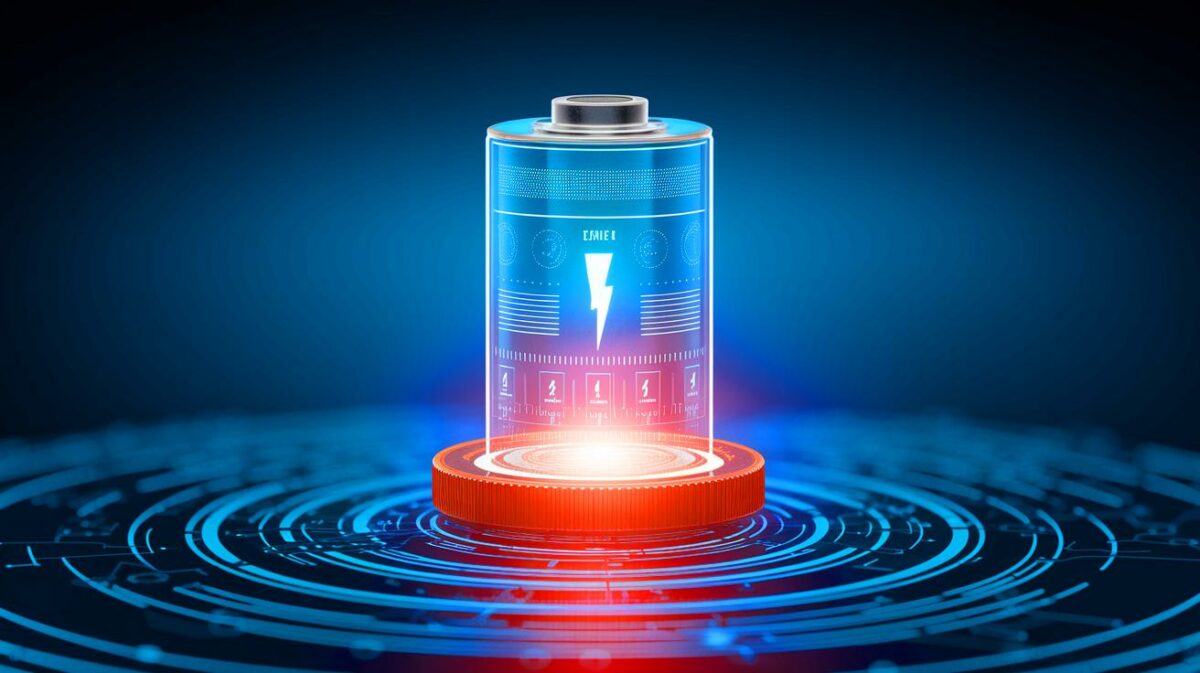| IN A NUTSHELL |
|
In a world where our electronic devices constantly demand power, the introduction of a groundbreaking battery that could last a century without recharging is nothing short of revolutionary. This remarkable innovation hails from China, where technological advancements often surprise and intrigue global audiences. As traditional batteries struggle to last a day, this new technology promises to redefine energy standards, potentially transforming everything from smartphones to space exploration.
China’s Revolutionary Battery Breakthrough
The ambitious vision of a world where devices rarely need recharging is becoming a reality, thanks to China’s technological prowess. The introduction of the BV100 battery by the Chinese company Betavolt marks a significant milestone in the realm of energy solutions. This miniaturized battery, powered by Nickel-63, is not merely a laboratory prototype; it is already in production. With the ability to operate for up to 50 years without a recharge, it’s poised to revolutionize numerous sectors, including medical, aerospace, and even consumer electronics. Imagine a smartphone that you never need to plug in or a space probe that could explore distant planets for decades—this is the promise of Betavolt’s nuclear battery technology.
Unveiling the Potential Applications
The introduction of the BV100 is not just about technological marvel; it’s about the vast potential applications that this battery technology offers. In the medical field, devices such as pacemakers could benefit immensely from a power source that lasts a lifetime, reducing the need for risky surgeries to replace batteries. In aerospace, unmanned probes and satellites could be powered for decades, making long-term space missions more feasible than ever before. In everyday life, this technology could eventually find its way into our smartphones, drastically reducing electronic waste and enhancing convenience. This wide-ranging applicability underscores the transformative power of the BV100, promising a shift in how we perceive and use energy in various sectors.
The Science Behind Nickel-63
The secret to the BV100’s longevity lies in its innovative use of Nickel-63, a radioactive isotope known for its stability and energy efficiency. Nickel-63 undergoes beta decay, a process that releases electrons over an extended period, thereby providing a consistent power source for decades. This stable energy release is crucial for applications where reliability is paramount, such as in medical devices or space equipment. The use of Nickel-63 also ensures the battery remains compact, which is essential for integrating into small devices. While nuclear technology often raises concerns, the stability and controlled energy output of Nickel-63 make it a safe and viable option for long-term energy solutions.
“UK’s robotic hound takes over” – This remote-controlled dog now conquers deadly nuclear zones
Navigating the Challenges and Concerns
Despite its promising potential, the deployment of nuclear battery technology like the BV100 is not without challenges. Safety concerns are paramount, given the use of radioactive materials, even though Nickel-63 is known for its stability. Addressing public perception and regulatory hurdles will be critical for widespread adoption. Additionally, the cost of production and the environmental impact of nuclear materials must be carefully managed. However, with China leading the charge, the focus remains on balancing these challenges with the enormous benefits the technology promises. As production scales and technology matures, these concerns may well be mitigated, paving the way for a new era of energy solutions.
As the world watches China’s advancements in nuclear battery technology, the possibilities seem endless. The potential for a battery that can power devices for decades without recharging could revolutionize industries and change our daily lives. However, the success of such technologies will depend on overcoming safety, regulatory, and environmental challenges. Will the future of energy be defined by such innovative breakthroughs, and how will other nations respond to China’s technological leap forward?
Did you like it? 4.4/5 (26)









Wow, this sounds like science fiction! Can’t wait to see it in my smartphone. 📱
How safe is it to have a nuclear battery in everyday devices?
Imagine never having to charge your phone again! That’s incredible. 😮
Why is it called “BV100” if it lasts only 50 years?
Great innovation, but what about the cost? 💸